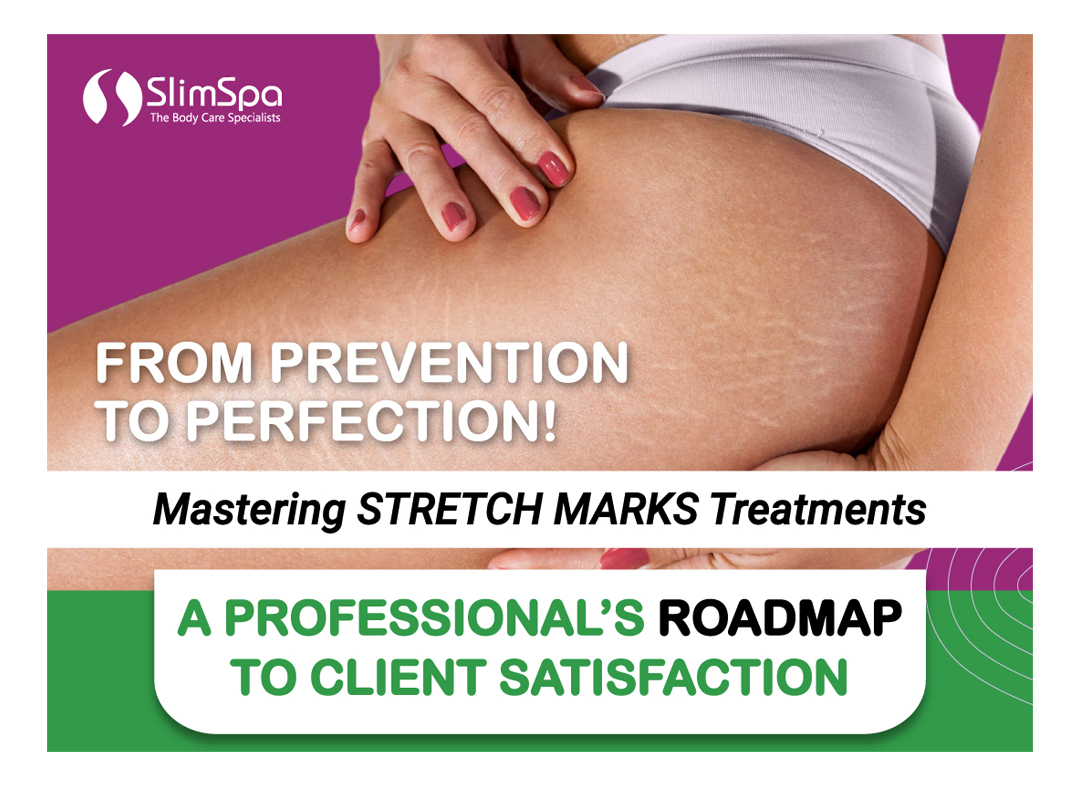Stretch marks, those visible lines on the skin surface that concern many, are a common but often misunderstood issue in the world of aesthetics. They affect a large portion of the population, regardless of age or gender. As professionals dedicated to skincare, it is essential to be equipped with the correct information and the most effective techniques to address them. In this post, we will delve into the world of stretch marks (Striae), understanding what they are, why they appear, how to prevent them, how to avoid their appearance, and most importantly, how to treat them with non-invasive professional aesthetic procedures in a spa. Additionally, we will explore recommendations and therapies that clients can perform at home to improve the appearance of stretch marks.
What Are Stretch Marks?
Stretch marks are scars that form when our skin stretches or shrinks rapidly, causing the collagen and elastin fibers to break. This results in visible lines on the skin surface that can vary in color from pink, red, purple, to paler tones once they mature.
Why Do Stretch Marks Appear?
The causes of stretch marks are varied and include factors such as rapid weight gain or loss, pregnancy, puberty, hormonal changes, and certain medical conditions or treatments that affect the skin. Although they are not harmful to health, they can affect the self-esteem and confidence of those who have them.
Prevention and Avoidance of Stretch Marks
Prevention is key when it comes to stretch marks. Maintaining adequate hydration, both internally and externally, helps to maintain the skin’s elasticity. Encouraging a balanced diet rich in vitamins C, D, E, zinc, and silicon can strengthen the skin from within. Additionally, regular exercise and skincare with products that promote elasticity can be useful in preventing their appearance.
Non-Invasive Professional Aesthetic Treatments
In a spa setting, there are several non-invasive treatments that can significantly improve the appearance of stretch marks:
1.Microdermabrasion: This treatment exfoliates the skin, promoting the regeneration of new cells and the production of collagen.
2.LED Light Therapy: Uses specific lights to promote healing and skin regeneration, reducing the visibility of stretch marks.
3.Microneedling (Collagen Induction Therapy): Creates micro-injuries in the skin to activate the body’s natural healing process and increase the production of collagen and elastin.
4.Body Masks: Incorporating body masks that contain clay, collagen, elastin, or seaweed can provide a deeply nourishing and rejuvenating treatment for the skin. These ingredients can detoxify, hydrate, and improve skin elasticity, thereby aiding in the reduction of stretch marks. Clay masks help to draw out impurities and improve circulation, while collagen and elastin-infused masks support the skin’s natural repair process. Seaweed masks are rich in vitamins and minerals, offering intense moisturization and promoting skin health.
Home Care Recommendations
To complement professional treatments and maximize results, it is crucial that clients continue with a dedicated home care regimen. Here are some specific recommendations on creams, serums, and lotions rich in active ingredients that promote the regeneration of collagen and elastin, key elements for improving the appearance of stretch marks.
1.Collagen: Helps improve the skin’s elasticity and firmness. Look for products that contain hydrolyzed collagen, which is easier for the skin to absorb.
2.Elastin: This ingredient is crucial for maintaining the skin’s flexibility. Although the skin cannot absorb large elastin, low molecular weight elastin peptides in certain products can help stimulate the production of the skin’s own elastin.
3.Hyaluronic Acid: Attracts moisture to the skin, keeping it hydrated and helping to reduce the appearance of stretch marks.
4.Vitamin E: A powerful antioxidant that helps repair and protect the skin from future damage. It is known for improving the skin’s elasticity and reducing the visibility of scars.
5.Rosehip Oil: Rich in essential fatty acids and vitamin A, this oil is highly effective in improving the texture and pigmentation of stretch marks.
6.Centella Asiatica: This plant extract promotes collagen production and has healing properties, making it excellent for treating stretch marks.




